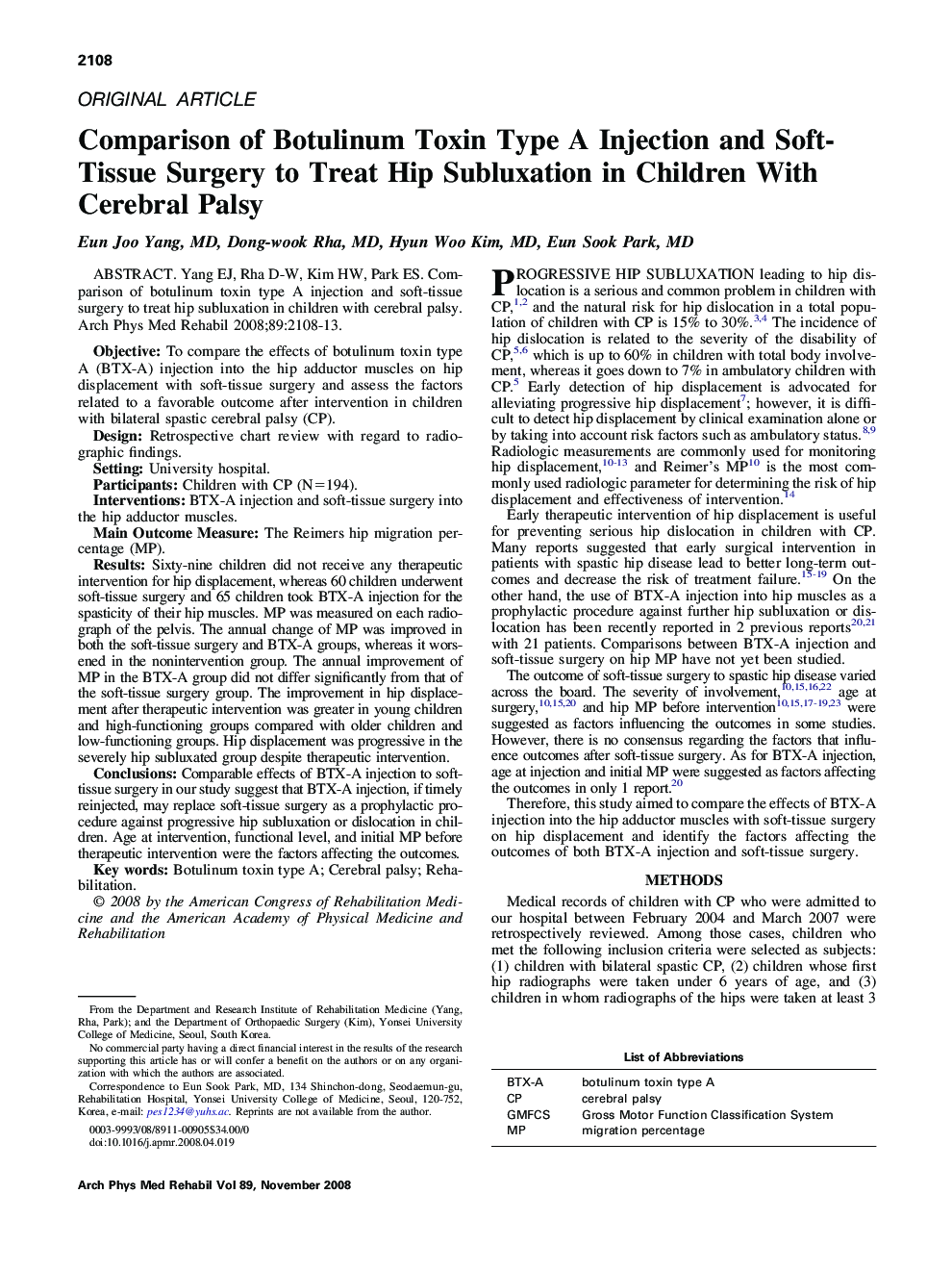| کد مقاله | کد نشریه | سال انتشار | مقاله انگلیسی | نسخه تمام متن |
|---|---|---|---|---|
| 3451278 | 1595773 | 2008 | 6 صفحه PDF | دانلود رایگان |

Yang EJ, Rha D-W, Kim HW, Park ES. Comparison of botulinum toxin type A injection and soft-tissue surgery to treat hip subluxation in children with cerebral palsy.ObjectiveTo compare the effects of botulinum toxin type A (BTX-A) injection into the hip adductor muscles on hip displacement with soft-tissue surgery and assess the factors related to a favorable outcome after intervention in children with bilateral spastic cerebral palsy (CP).DesignRetrospective chart review with regard to radiographic findings.SettingUniversity hospital.ParticipantsChildren with CP (N=194).InterventionsBTX-A injection and soft-tissue surgery into the hip adductor muscles.Main Outcome MeasureThe Reimers hip migration percentage (MP).ResultsSixty-nine children did not receive any therapeutic intervention for hip displacement, whereas 60 children underwent soft-tissue surgery and 65 children took BTX-A injection for the spasticity of their hip muscles. MP was measured on each radiograph of the pelvis. The annual change of MP was improved in both the soft-tissue surgery and BTX-A groups, whereas it worsened in the nonintervention group. The annual improvement of MP in the BTX-A group did not differ significantly from that of the soft-tissue surgery group. The improvement in hip displacement after therapeutic intervention was greater in young children and high-functioning groups compared with older children and low-functioning groups. Hip displacement was progressive in the severely hip subluxated group despite therapeutic intervention.ConclusionsComparable effects of BTX-A injection to soft-tissue surgery in our study suggest that BTX-A injection, if timely reinjected, may replace soft-tissue surgery as a prophylactic procedure against progressive hip subluxation or dislocation in children. Age at intervention, functional level, and initial MP before therapeutic intervention were the factors affecting the outcomes.
Journal: Archives of Physical Medicine and Rehabilitation - Volume 89, Issue 11, November 2008, Pages 2108–2113